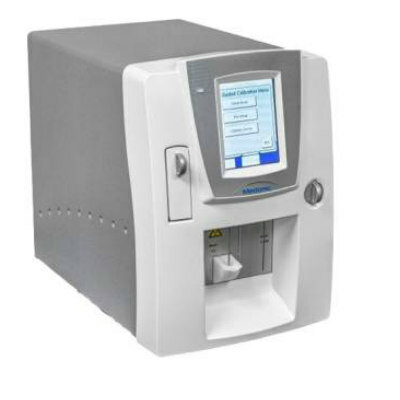Rapid Diagnostic Test Reliable for Pregnancy-Associated Malaria
By LabMedica International staff writers
Posted on 10 Jul 2012
Microscopy is the gold standard in malaria diagnosis, but it has limited detection and availability, so rapid diagnostic tests (RDTs) could be an ideal diagnostic complement to microscopy. Posted on 10 Jul 2012
When used appropriately, RDTs are easy to use and have adequate sensitivity in detecting even submicroscopic infections and the accuracy and reliability these tests has been evaluated in diagnosing pregnancy-associated malaria (PAM) compared to microscopy and PCR.
Scientists at the National Institute for Medical Research (Tanga, Tanzania) collaborating with an international team, followed a cohort of women throughout pregnancy for detection of plasmodial infection using venous and placental blood samples. They evaluated the malaria status by histidine rich protein 2 (HRP-2) and parasite lactate dehydrogenase (pLDH) based RDTs or HRP-2 only, microscopy and nested Plasmodium species diagnostic polymerase chain reaction (PCR).
From a cohort of 924 pregnant women who completed the follow up, complete RDT and microscopy data was available for 5,555 blood samples and of these 442 samples were analysed by PCR. Parascreen (Zephyr Biomedicals; Goa, India) is an RDT that detects HRP-2 antigen from Plasmodium falciparum and pLDH from the Plasmodium species and was used for the majority of samples in this study. A minority of samples were tested by Paracheck Pf (Orchid Biomedical Systems; Mumbai, India) or ParaHITf (Span diagnostics Ltd.; Surat, India), the commonly available RDTs in the study area.
Of the 5,555 blood samples, 49 samples were positive by microscopy and 91 by RDT. Forty-six of the RDT positive samples were positive and negative by microscopy, respectively, whereas nineteen of the microscopy negative, but RDT positive, samples were positive by PCR. Three samples were positive by microscopy, but negative by RDT and 351 of the 5,461 samples negative by both RDT and microscopy were tested by PCR and found negative. There was no statistically significant difference between the performances of the different RDTs.
The authors concluded that microscopy underestimated the real burden of malaria during pregnancy and RDTs performed better than microscopy in diagnosing PAM. In areas where intermittent preventive treatment during pregnancy may be abandoned due to low and decreasing malaria risk and instead replaced with active case management, screening with RDT is likely to identify most infections in pregnant women and out-performs microscopy as a diagnostic tool. The study was published on June 21, 2012, in the Malaria Journal.
Related Links:
National Institute for Medical Research
Zephyr Biomedicals
Orchid Biomedical Systems












